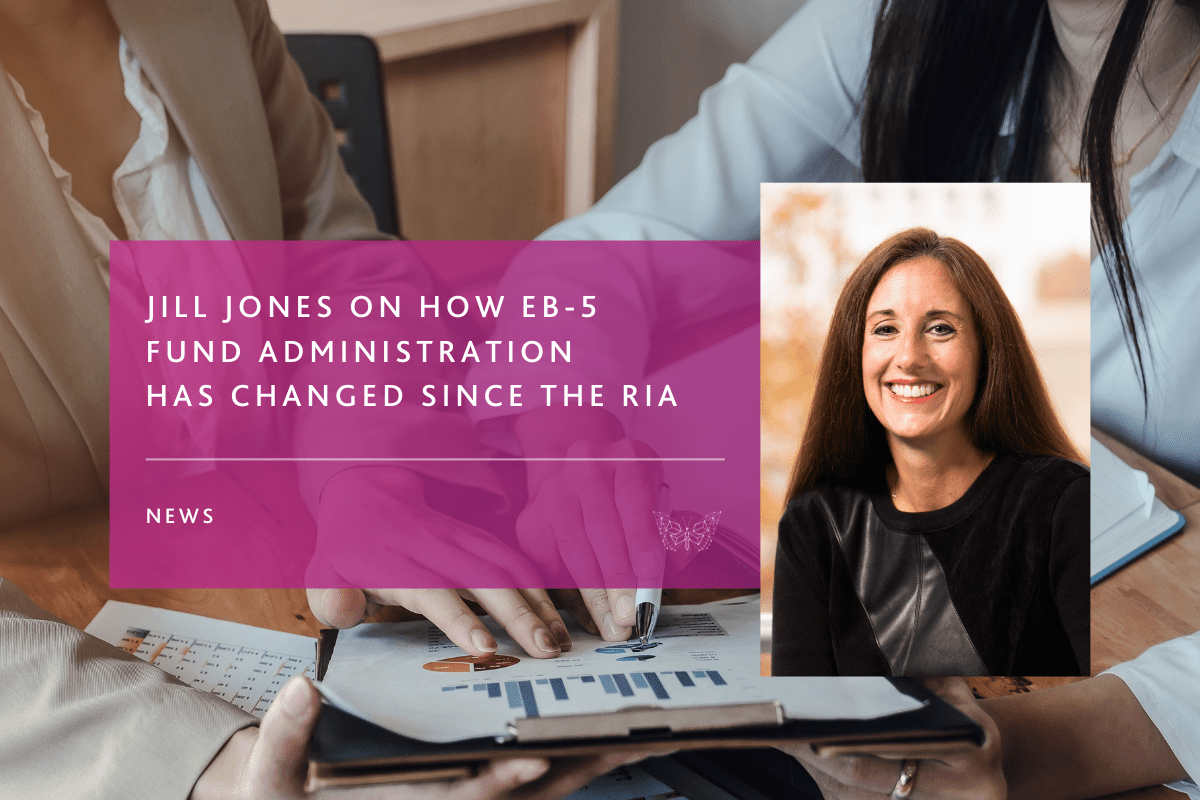One of the most intriguing provisions of the RIA was the set-aside visas for rural projects. With data coming in, we have some clarity on priority processing and whether demand has increased.
When the EB-5 Reform and Integrity Act of 2022 (RIA) was passed, it did more than just renew the Regional Center program for five years. In addition to a long list of new rules, the RIA created new visa categories and set aside a percentage of visas for investors in those categories.
Under the RIA, 20% of all visas are to be reserved for investments in rural projects, 10% for those in high-unemployment areas, and 2% for infrastructure projects. This change had the potential to draw more investment to rural areas and reignite interest in EB-5 by drastically cutting the wait times for some investors.
Rural EB-5 investment: what changed with the RIA
According to the text of HR2471, of the visas made available to EB-5 investors in each fiscal year, “20 percent shall be reserved for qualified immigrants who invest in a rural area,” and the Secretary of Homeland Security “shall prioritize the processing and adjudication of petitions for rural areas.”
The priority processing provision seemed like good news for rural investors, especially considering the long wait times that have plagued EB-5. However, the bill also says that the Secretary “may process petitions in a manner and order established by the Secretary,” with little guidance as to what “priority processing” would actually entail.
Despite this lack of clarity, it was thought that rural projects would become highly sought after, not only because of priority processing, but because of the set-aside visas. Countries like China and India have had extremely long wait times, and investing in a reserved category could allow some investors to effectively “skip the line” and apply for Adjustment of Status concurrently with their I-526 applications even though their countries don’t currently qualify for concurrent filling.
Though an increase in rural activity was expected, some worried this might only be temporary. While unused rural visas would “roll over” to the following year, that queue could fill up and become backlogged just like regular EB-5 applications. Rural projects also present specific challenges not all developers are prepared to meet, meaning there was no guarantee there would be enough of them to meet the increased demand.
Challenges of rural EB-5 projects
An article in Forbes points out several key risks presented by rural EB-5 projects. Rural projects are often in areas with lower population density, resulting in a smaller pool of potential tenants for multifamily projects. “Rural areas are often tied to a single major industry, and if that leaves, the demand for housing would go down.”
Each EB-5 investment must create 10 jobs, but as the article notes, “banks and other lenders may be more unlikely to find a rural project creditworthy as opposed to a development in a densely populated urban area.” This difficulty in securing traditional financing, combined with high interest rates, “drives some developers to rely on EB-5 funding.”
But the more EB-5 investors involved, the more jobs that must be created, and it can be difficult to find a project that will both create the requisite jobs and be financially viable in a rural area. Some locations aren’t a good fit for large-scale hospitality projects, and in areas with lower rents for retail or office space, generating returns could be a challenge.
One must also consider the map that designates rural areas. What happens if the map is redrawn? This happened in 2023, with the change affecting the designation of around100 areas. Because many rural areas also have high unemployment, some previously-designated rural tracts are now high-unemployment TEAs, and vice-versa, allowing investors to file under the other category. But a sudden loss of the reserved visa benefit could cause investors to back out, something developers would need to be prepared for.
Despite the risks involved with rural EB-5 projects, we’ve seen projects that have been able to impact rural communities while providing immigration benefits for EB-5 investors.
An EB-5 rural success story
LCR Capital Partners is a private investment and advisory services firm that provides a variety of services for immigrant investors, including those interested in the EB-5 Immigrant Investor Program and the E-2 Investor Visa. In addition to helping families identify investments in Direct and Regional Center projects, the company also provides access to LCR Wealth Management, a Registered Investment Advisor, and International Investors Mortgage, which provides mortgage solutions to foreign nationals.
After the passage of the RIA, LCR was perfectly positioned to help connect immigrant investors to rural projects, which they did by partnering with US Strategic Metals on the construction of a battery-grade metals refinery for processing mined and recycled critical minerals.
The key to getting a rural project started so quickly after the RIA’s passage, said LCR CMO John Baker, was that LCR was already committed to bringing EB-5 investment to a rural area and picked the right partners for the job.
“We have been interested in projects that support the US national interest since before reauthorization, and have been working with investment banking partners discussing their corporate capital-raising projects to find ones that need EB-5 capital to go forward,” said Baker. “The benefit of this approach is the company is being vetted by institutional capital, and the management team has the sophistication to meet the expectations of these investors.”
The team at LCR was aware of the potential hurdles of rural projects, but understood the benefits a facility like this could bring to the local community.
“We want EB-5 capital to support projects in rural areas because we believe it is good for the country and believe EB-5 can provide real support to projects in the national interest,” he said. “The challenge with rural projects is economic activity in rural areas tends to be less than urban areas. If a project is multi-family housing, or a mixed-use hospitality business, the rural project is more at risk in an economic downturn.”
Nonetheless, he added, “This project, like many of the best EB-5 projects, has a huge impact on the local community. For the community in Fredericktown, Missouri, US Strategic Metals is replacing old economy jobs that focused on mining and extraction, and building a new technology plant that is focused on recycling and processing unused materials on the site. They began by leading an environmental cleanup of the industrial site. The United States can lead the world in developing green energy and new economy technologies. We have the engineering and manufacturing talent to do that.”
In addition to rural designation, LCR has also requested expedited processing due to the project’s being in the national interest. This applies not only to project applications, but also to the individual investors who take part in the project.
“The building of the US supply chain for critical metals has been defined as a focus by US presidents of both parties, called out by Congress in recent legislation, and included in public statements by the Department of Defense and Department of Energy. We are confident it will remain an area of growth regardless of political change or economic downturn,” said Baker.
“Processing times are a very real deterrent to foreign families investing in the EB-5 program. To receive expedited status, a department in the executive branch needs to request it from USCIS and make a case for why it is in the US national interest to approve the prioritization of the project or the investors.”
As for the benefits of prioritizing certain types of projects, Baker believes it’s the key to helping EB-5 achieve greater impact for US communities.
“We know projects that can deliver faster processing are sought out by the market. USCIS has the ability to influence where capital goes and how quickly it comes in by deciding how it processes these petitions. We believe that as we enter a new EB-5 era, the industry can build a reputation for driving projects that make a real difference.”
How rural set-asides have impacted EB-5 investment
We’ve now had almost two years to see the RIA’s provisions in action. Have rural set-asides had their intended effect? Are applications being processed faster? Has more investment been directed toward rural projects thanks to the reserved visas? Has there been greater interest from China and India as expected?
Based on what we at JTC have seen, the answer seems to be yes. Comparing investor volume from 2022 to 2023, the number of Chinese investors in active projects has grown by more than 400%. In contrast, the number of Korean investors has decreased by 84% and the number of Vietnamese investors has decreased by 63%.
Though this is a small sample size, it indicates that not only has interest from China grown, but also indicates developers haven’t needed to seek out investment from countries with less robust EB-5 industries to replace capital from what had been a stagnant Chinese EB-5 market. Now that Chinese investors have a chance to take advantage of visa set-asides, they’re investing.
As for priority processing, there have been reports of I-526E applications being approved by USCIS in less than a year. Compare that to the old Regional Center program, where some applicants had to wait years for approval, and the advantage of rural investment is obvious.
Now that we know priority processing is real, we can expect even more investor interest in rural projects. The question then becomes: will the rural category “fill up” and become backlogged?
According to information gathered through a Freedom of Information Act (FOIA) request from the American Immigrant Investor Alliance (AIIA), for the period between April 1, 2022, and April 30, 2023, 377 I-526/I-526E applications were filed under the rural category, making up 24% of the total. Of these, most applicants were from China (247) and India (57).
The category with the most applications was high-unemployment TEA, which received 69% of the total, again with China being the leading country of origin. 7% of applications came from non-reserved projects and none came from infrastructure, while 5 filings were “tagged for both rural and high unemployment.”
Other data from later in the year has shown that the number of overall filings continues to grow. If this growth continues, at some point, demand for set-aside visas will outpace supply. That has not happened yet for the rural category, but the high-unemployment category is much closer. However, as AIIA notes, “I-526E filed in 2023 are unlikely to all become qualified visa applicants in 2024, meaning the visa bulletin will likely remain open in 2024.”
There is still some time before these categories “fill up.” If and when they do, investors form China and India will have to worry about country caps. Without the advantage of faster processing times, investors may not be as keen on rural projects. We’ll just have to see.
Is starting a rural EB-5 project a good idea in 2024?
Until we get any news to change the current outlook, rural projects are going to be desirable because of the reserved visas and priority processing. But not everyone can start a rural project. You need the right partners to help the project be efficient and provide investors with the security and transparency they desire.
That’s where JTC comes in. Our RIA-compliant fund administration helps keep costs down through efficient technology and document management. We also offer escrow services and a banking solution that provides peace of mind for investors, as well as a 24/7 online portal with immigration workflow so investors can access the information they need for their applications. If you’re looking to use EB-5 capital for a rural project, get in touch with JTC.
To learn more about JTC’s EB-5 administration solutions.
Stay Connected
Stay up to date with expert insights, latest updates and exclusive content.
Discover more
Stay informed with JTC’s latest news, reports, thought leadership, and industry insights.
Let’s Bring Your Vision to Life
From 2,300 employee owners to 14,000+ clients, our journey is marked by stability and success.



















